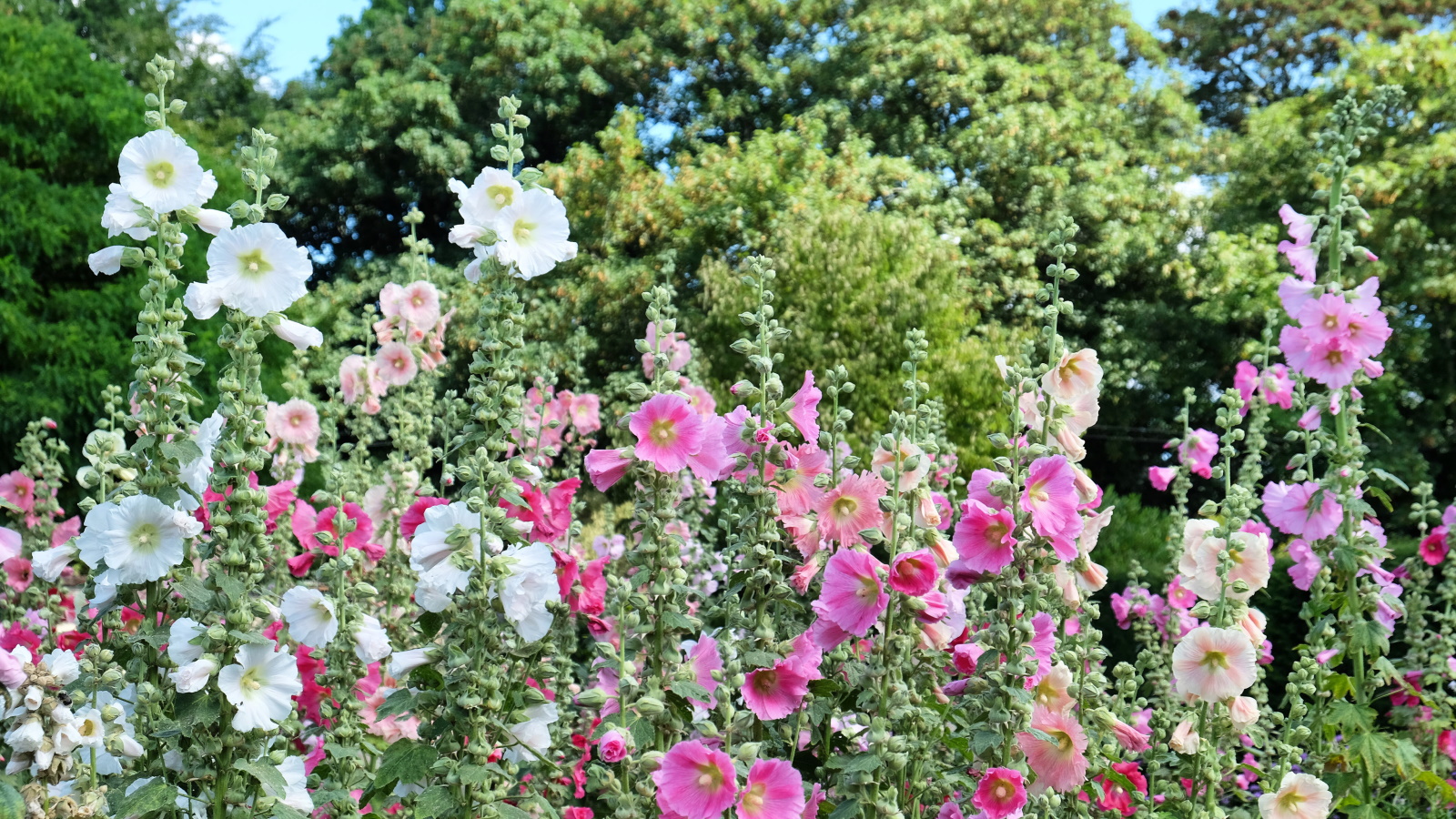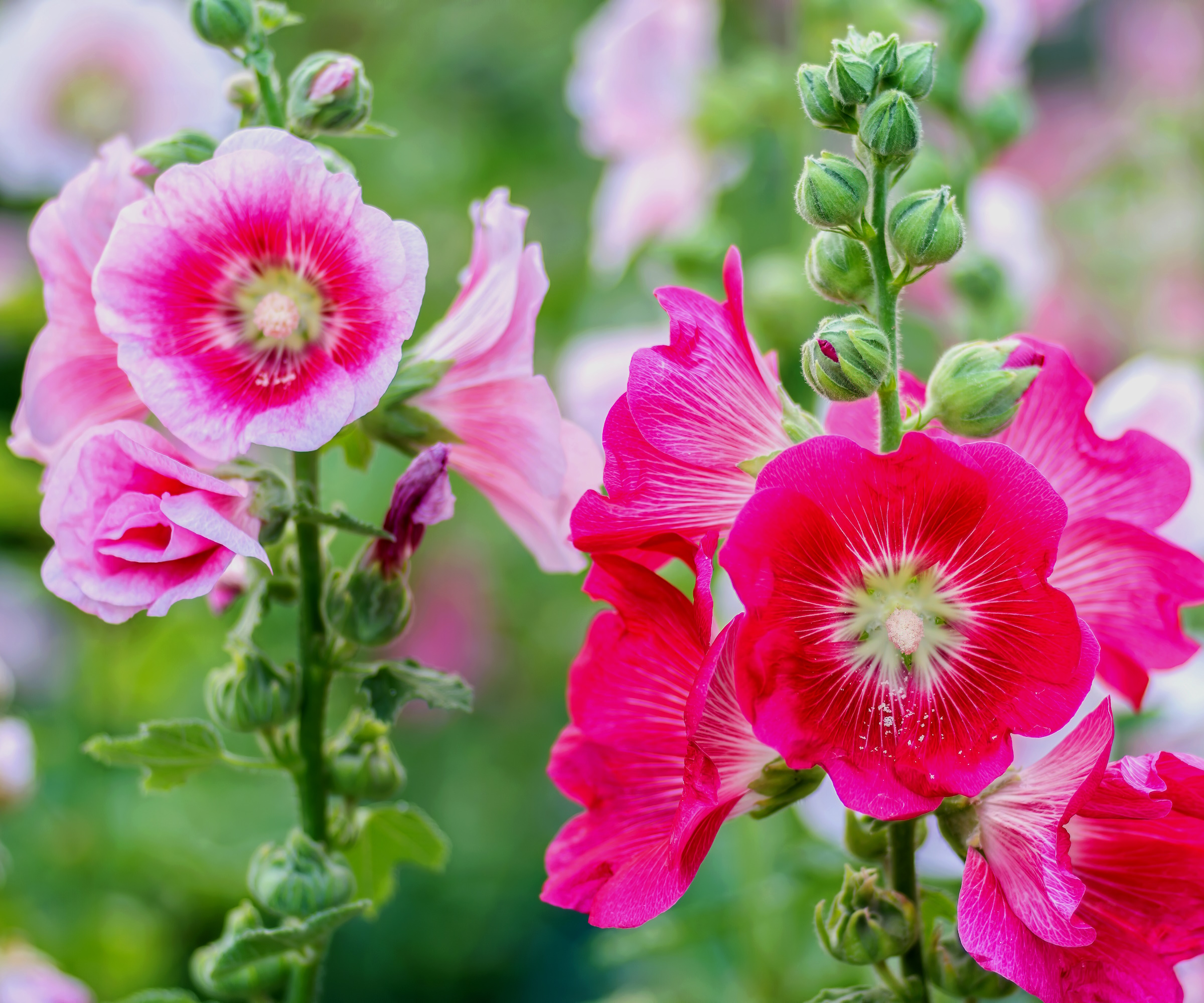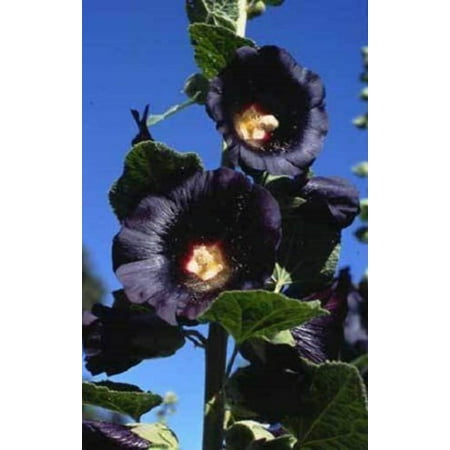Is it necessary to fertilize hollyhocks? Experts reveal how best to care for these colorful blooms
Hollyhocks are famed for their flowers, and feeding can give them a boost


Often considered some of the best cottage garden plants, hollyhocks never fail to dazzle. These flowering titans can reach up to 7 feet tall, with stems producing hundreds of saucer-like blooms that last from spring until the first frost. Hollyhocks are renowned for their colorful display, with blooms ranging from deep maroon to lemon yellow. One of my favorite varieties is Alcea rosea 'Nigra', with dark red - almost black - flowers. This is the variety to grow if you are looking for impact in the borders.
When considering how to grow hollyhocks, these plants are easy to grow from seed. In the UK, I often see them thriving along the roadside or in green fields and parks, happily self-seeding wherever they like. For beginner gardeners and experts alike, hollyhocks are an ideal pick for a low-maintenance yard.
While hollyhocks can grow just fine without much fertilizer, the occasional application of feed - particularly for those plants grown in pots - can help to maintain a brilliant and long-lasting display. As a former professional gardener, I have grown these flowers in many different gardens across the UK and Italy, and here, I share all I know about how to fertilize hollyhocks.

Is it necessary to fertilize hollyhocks?
Hollyhocks grow best in US hardiness zone 3 to zone 8, typically seen in sunny borders with tall flower spikes. These tough self-seeding flowers are unsurprisingly self-reliant, usually thriving without much care. As a gardener, I would always caution against using fertilizer when it is not necessary, as over-fertilizing plants can cause considerable damage. However, there are some instances when it can help to fertilize hollyhocks.
When to fertilize hollyhocks

Hollyhocks are biennials or short-lived perennials, meaning they will flower in their second year, possibly returning to bloom for a third year, but any longer is unlikely. Fortunately, they are prolific self-seeders, so you should have a continuous supply of new hollyhocks to keep your borders full.
'For hollyhocks in their first year, whether grown from seed or purchased as a small plant from a garden store, it can be beneficial to add some goodness to the soil,' says Drew Swainston, former professional gardener and gardens content editor at Homes & Gardens.
'This is best done in the spring, either with a good covering of mulch or a liberal sprinkling of slow-release fertilizer,' Drew adds. Slow-release fertilizers are available from Walmart.
Design expertise in your inbox – from inspiring decorating ideas and beautiful celebrity homes to practical gardening advice and shopping round-ups.
For hollyhocks that are in flower in their second year, whether grown in pots or borders, Drew recommends 'feeding throughout the growing season, as this can help extend blooming.' Regularly applying a small amount of feed from spring right through until fall, as Drew says, can encourage extra flower stems toward the end of the season.
'If your hollyhocks are in good health and producing plenty of flowers, it might not be necessary to fertilize them,' Drew continues. 'Over-feeding is a fertilizing mistake that many gardeners make, so I would always err on the side of caution, sticking with a light amount of feed for hollyhocks.'

Drew qualified as a journalist and wrote for many websites and publications, before studying for a horticulture qualification. He worked as a professional gardener for many years, specializing in kitchen gardening. He's now bringing his expertise and passion to Homes & Gardens as a member of our team.
How to fertilize hollyhocks

For a slow-release fertilizer, use a balanced 10-10-10 feed, such as this slow-release fertilizer from Amazon. This is recommended for younger plants either in pots or beds, mixing into the soil in the spring.
Using a slow-release fertilizer will help to feed your plants over an extended period. I tend to mix a small handful of granules with fresh potting soil when planting up my pots in the spring.
Hollyhocks in their second or third year can also benefit from an application of fertilizer. Feeding them from spring until the fall will maintain flower production. For these hollyhocks, it is better to use a fertilizer with high phosphorus content, this is the middle digit of the plant fertilizer numbers and should be clearly labelled on the packaging. Many products are available in-store or online, such as this organic bloom booster, available from Amazon.
To improve the quality of your garden borders, it is good practice to make mulching an annual job. Applying even a thin layer of decomposing plant material - whether homemade or store-bought - can dramatically improve soil health and feed the soil for the year ahead. While mulching can be done at any time of year, I find it is best to do so in the fall or winter, when you begin to cut back and remove fading plants.
FAQs
Is it better to use slow-release or water soluble fertilizer for hollyhocks?
The choice is up to you! Both products will help to feed your plants. Slow-release fertilizers are useful for those gardeners who are short on time, as you only have to apply feed once per season. Water-soluble fertilizers, however, are a monthly task and part of the summer gardening checklist. Water soluble feeds are faster-acting but short-lived, whereas the slow-acting but long-lasting granules can feed plants for up to three months. Both do a good job of feeding plants, so personal preference will determine what you use.
Learning how to fertilize hollyhocks can help to encourage more blooms during the growing season. However, if your plants are thriving and producing plenty of flowers, I would caution against using fertilizer when it is not needed.
For more hollyhock information, see our guide on how to combat hollyhock rust, and keep your plants looking good all summer long.

Thomas is a Content Editor within the Gardens Team at Homes and Gardens. He has worked as a professional gardener for both public spaces and private estates, specializing in productive gardening, growing food and flowers. Trained in Horticulture at the Garden Museum, he has written on gardening and garden history for various publications, including The English Garden, Gardens Illustrated, Hortus, The London Gardener and Bloom. He has co-authored a Lonely Planet travel book, The Tree Atlas, due out in 2024.

